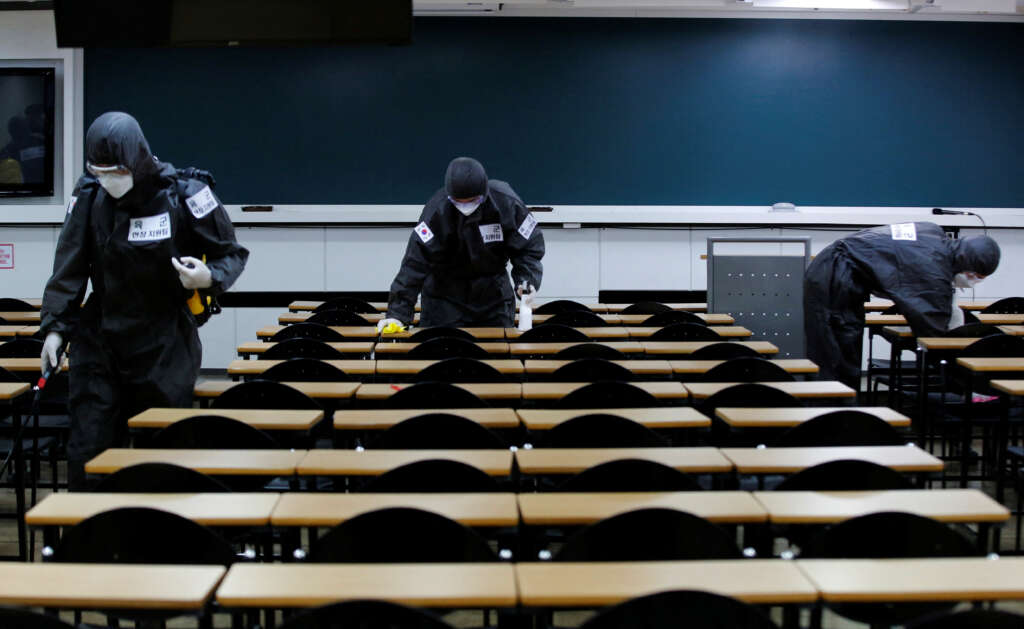
Esme Bianchi-Barry, CEO at Affinity Workforce, looks at the causes of the current staffing crisis facing many English schools and colleges and what is needed to overcome it.
The current staffing crisis
Children spend around 1267 hours a year in the classroom. Building a good relationship between a child and their teacher is key in terms of how a child engages in school and how much they learn.
The current staffing crisis in schools will therefore be of huge concern for parents as well as the government, local authorities, and the schools themselves.
Schools are facing unprecedented funding problems as they, along with households across the country, struggle to keep up with the rising energy costs. And teachers are struggling to cover their bills from their current pay.
Pay levels, as well as workload pressures and underfunding, are the most common reasons why teachers are leaving their posts and why 65% of the schools surveyed by the Association of School and College Leaders (ASCL) are struggling with teacher retention.
Association of School and College Leaders survey
The survey, carried out in June 2022, found that 95% of those schools that responded were experiencing difficulties recruiting teachers. The majority of schools trying to recruit candidates to fill their vacancies said they didn’t receive sufficient applicants for the post. A staggering 69% which represents over 500 responses, said they didn’t receive any applications for some advertised posts.
To plug the gaps and try to ensure children’s education is affected as little as possible, school leaders are employing various tactics such as relying on supply teachers, increasing class sizes, using unqualified teachers and higher-level teaching assistants, changing the curriculum and reducing subject choices, and trying to recruit from overseas.
The survey revealed that the most common reasons why teachers leave the profession were workload, pay, and reassessing work/life balance as a result of the Covid-19 pandemic.
Pay levels affecting the staffing crisis
In terms of teacher’s pay, it is around a fifth lower in real terms than the level it would have been had it been increased in line with RPI inflation since 2010. The current level of RPI is 11.7% and rising, making the government’s pay freeze for the last academic year and proposals of 3% and then 2% for the next two years fall far below what teachers need to keep up with the rising cost of living. One responder in the survey indicated a member of staff had to resign because they couldn’t afford the petrol for their commute to work.
Some survey responses indicated that teachers were finding they could earn as much as they do as a teacher in a business working from home, which offers them far better flexibility and work/life balance.
Unfortunately, none of these issues is new. However, the impact of Covid-19 and the cost-of-living crisis has exacerbated them in recent years as a result of increasing workloads and inflation eroding the worth of a teacher’s salary.
The role of supply teachers
Supply teachers have always played a key role in schools by covering sickness and parental leave or plugging short-term gaps between a teacher leaving and a new one starting. However, they are increasingly being relied on to make up for the fact that schools are unable to recruit and then retain staff, resulting in a 19% increase in supply teacher placements by Affinity Workforce over the last five years. In the 2021/2022 school year this was equivalent to more than 8,000 placements.
Using supply teachers in the longer term has its benefits for the school, such as certainty for the pupils and enables good working relationships to be developed. And there will always be a need for supply teachers within the industry. They are a key part of the staffing structure, bringing flexibility, enthusiasm, new experiences, and many other benefits to a school. In the last academic year Affinity Workforce saw 70% candidate retention for supply teachers, resulting in more consistency for the pupils and staff.
But they can’t be used to constantly plug the holes created by the recruitment crisis within the sector. A sixth of new teachers leave full-time teaching within a year of being qualified. Government policy, therefore, needs to address this in the long-term, otherwise schools will continue to struggle to recruit permanent staff, causing uncertainty for leaders and, more importantly, students.
The government’s response to the teacher staffing crisis
In response to this and previous recruitment crises, the government has introduced initiatives such as the introduction of the early career framework to provide more support to early careers teachers and schemes to encourage more overseas teachers to teach in England.
And whilst these schemes may help, they leave the biggest issues – pay and workload – largely unresolved.
ASCL’s report conclusion
Richard Bettsworth, the Director of Public Affairs at ASCL, offers an insight into what needs to be done by the government in the conclusion of the June 2022 report.
“The government has launched a Schools White Paper which sets out targets to substantially improve pupil attainment by 2030. It wants to see the number of primary children reaching the expected standard in Key Stage 2 reading, writing and maths raised to 90% and the national average GCSE grade in English language and maths increase from 4.5 to 5.
“It is hard to see how these targets can be achieved when there are severe teacher shortages and without the political will and Treasury funding needed to improve the situation.
“Teachers are the essential pre-requisite on which every other aspiration and policy is based. In order to maintain and raise educational standards, the government must focus relentlessly on addressing the teacher, leader, and support staff crisis. It needs to look at all of its current proposals and policies through this lens and, working alongside the profession, develop a coherent, funded strategy that secures the vital human resource on which schools, colleges, and students depend.”
So, whilst supply teachers will always play a key role in a school’s workforce, they do not offer a long-term solution to the ongoing staffing crisis in English schools. This needs to be tackled through Government strategies that will encourage teachers to join the sector and remain in it.


